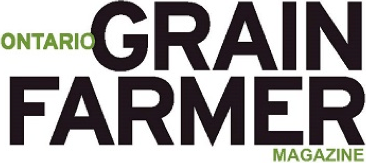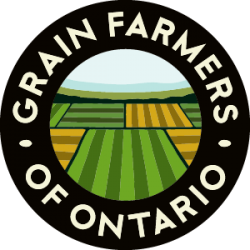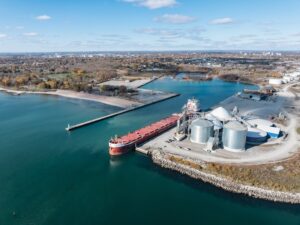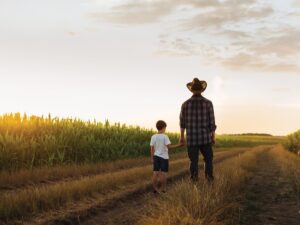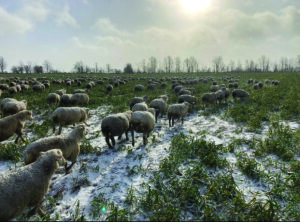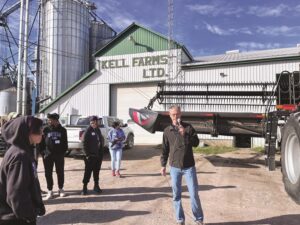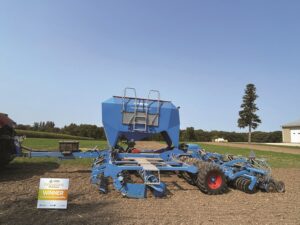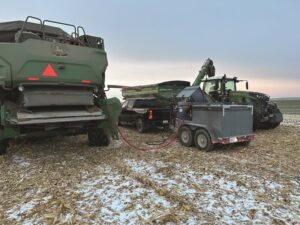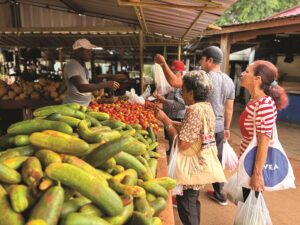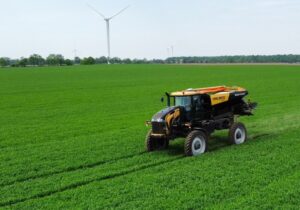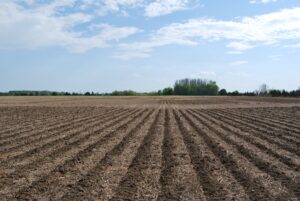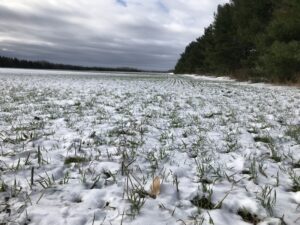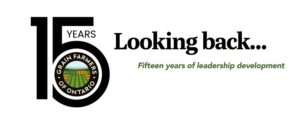View from the Hill
Ontario young leader goes to Washington
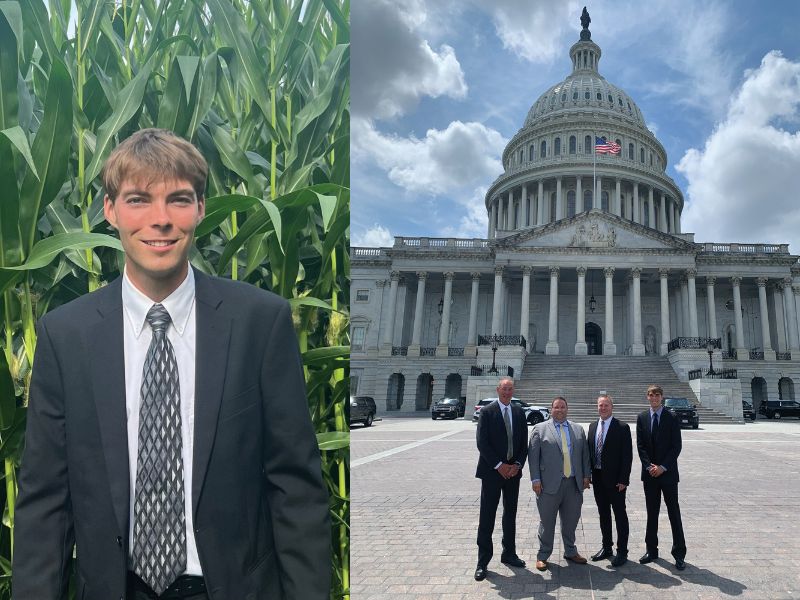
Editor’s note: Tyler Robertson, a delegate from District 2 (Kent), was selected to represent Grain Farmers of Ontario in the 2024-25 cohort of the ASA-Corteva Young Leader Program. Robertson was selected to participate in Phase III of the program, held in Washington, DC, in July 2025. The following is his personal reflection on the program and what he learned during his visit to the U.S. Capitol.
Representing Ontario at the 2024/25 ASA-Corteva Young Leader Program was an extremely valuable opportunity for me. Highlights of this three-phase leadership program included meeting and networking with participating farmers, American Soybean Association leaders, and politicians, as well as attending the Commodity Classic and participating in meetings on Capitol Hill.
Phase I of the program included a week at Corteva headquarters in Des Moines, Iowa, in October 2024, while Phase II involved attending the Commodity Classic in Denver, Colorado, in February 2025. Following these initial phases, each participant was given the opportunity to write an essay to apply to be among the 10 people selected to participate in Phase III, which was held in Washington, DC, in July 2025.
In my essay to the selection committee, I highlighted the many reasons why they should choose a Canadian. I described the integrated nature of the American and Canadian agricultural industries and explained why it is in the interests of both countries to collaborate. I explained that, even in these challenging political times, it remains vital to have face-to-face conversations between representatives from both countries and to maintain association- level communication. I further wrote about tariffs and retaliatory measures that threaten cross-border agricultural supply chains. I expressed that continued communication and work to ensure the uninterrupted cross-border trade that both countries depend on remains pivotal, as politics, presidencies, or tariffs cannot separate our agricultural connectivity. Agricultural advancement is not defined by country borders. Rather, it is what unites us, feeds our citizens, and is crucial to our livelihood on both sides of the border. In the spring of this year, I was excited to learn I had been selected as the first Canadian to participate in this third phase.
A UNIQUE OPPORTUNITY
As an Ontario farmer, Phase III provided a unique opportunity to engage directly with American policymakers on Capitol Hill and participate in the American Soybean Association’s July Board meeting. Each Phase III participant spent one day of the week with their state’s political leaders on Capitol Hill. The North Dakota Soybean Association invited me to join them for a day of lobbying, where we met with North Dakota’s Senator Hoeven and Congresswoman Fedorchak, both Republicans. The North Dakota delegation encouraged me to share with the politicians the integrated nature of Ontario cross-border supply chains and the importance of tariff-free trade. As a border state, they recognized the importance of trade with Canada and expressed their support for maintaining strong cross-border ties. I also spent some additional time with representatives from the Kansas Soybean Association. The various state associations were interested in the Canadian perspective.
KEY TOPICS DISCUSSED
Some key topics discussed in Washington included the escalating trade tensions, prospects of the United States’ withdrawal from the World Trade Organization (WTO), farm profitability, and Health and Human Services Secretary Robert F. Kennedy Jr.’s Make America Healthy Again (MAHA) movement. While all these concerns undermine U.S. farm business sustainability, U.S. soybean producers remain most deeply concerned by the mounting trade tensions. For instance, two-thirds of North Dakota’s soybean crop is exported through the Pacific Northwest to Asian markets. However, with rising uncertainty in global trade, the early warnings of a potential fallout, much like the U.S. 2018 trade war with China, are being suggested. Grain elevators in regions that rely on export markets are reportedly struggling to secure commitments from Asian buyers for the new crop soybeans. Currently, U.S. soybeans face a 34 per cent tariff when entering the Chinese market, which is a significant barrier relative to China’s tariff-free trade on Brazilian soybeans. Basis bids in some regions of North Dakota have fallen to US$1.20 under for new crop soybeans in response to weak demand. A basis of US$0.60 under is more typical for this time of the marketing cycle.
A longer-term consequence of the 2018 U.S.-China trade war was the loss of market share for American producers, which they never fully regained. This is potentially a path they are heading down again. Lawmakers on Capitol Hill are divided on whether the administration’s tariffs are merely a negotiation tool, a scare tactic, or a long-term shift in trade policy. There seems to be an uneasiness as some Republicans continue to speak of tariffs in the context of long-term revenue generation for the United States government.
The American Soybean Association’s leadership stressed the potentially devastating impact of tariffs, not just on exports, but also on imported farm inputs that are necessary for soybean production. In March of this year, Caleb Ragland, American Soybean Association president said, “ASA represents nearly half a million farmers in the United States who grow soybeans, and those farmers rely on two-way trade coming in and out of Mexico and Canada. Not only are those two markets vital for the export of whole soybeans, soy meal, and soy oil, but we also rely on them for fertilizer and other products needed to successfully produce our crops. For instance, around 87 per cent of the potash we use here in the U.S. is imported from Canada.” The American Soybean Association remains committed to advocating for the elimination of trade barriers.
Another trade-related concern involves the current U.S. administration reviewing the possibility of withdrawing the U.S. contributions to the World Trade Organization (WTO). In a released statement, the American Soybean Association strongly advocated for continued U.S. membership in the World Trade Organization. Withdrawing from the WTO could isolate U.S. agriculture, eliminate protections in trade disputes and put American soybeans at a disadvantage in world markets. The association believes participation in the WTO is essential for rules-based trade and global competitiveness.
Another challenge for the United States soybean producers is the controversial direction of the Make America Healthy Again Commission (MAHA). MAHA’s May report challenges the science behind critical crop protection products. It also calls into question the safety of seed oils and is a threat to both scientific integrity and food security. In reaction to this report, the American Soybean Association responded with a statement indicating, “The American Soybean Association strongly rebukes the May 22 Make America Healthy Again Commission report for being brazenly unscientific
and damaging to consumer confidence in America’s safe, reliable food system. Should the administration act on the report—which was drafted entirely behind closed doors— it will harm U.S. farmers, increase food costs for consumers, and worsen health outcomes for all Americans. ASA calls on President Trump, who has long been a friend of farmers, to step in and correct the Commission’s deeply misguided report.” Moreover, several U.S. Senators have been strong critics of this Commission, condemning MAHA’s approach and calling for a science-based methodology. At this time, however, there remains hesitation among some Republicans to publicly pushback against the administration. With 50 per cent of domestic U.S. soybeans used for edible oils and much of the world depending on these seed oils as a source of nutrition, calling into question decades of science providing evidence of their safety is an attack on the soybean industry.
In turbulent times such as these, commodity organizations such as Grain Farmers of Ontario and the American Soybean Association are more important than ever. Grain Farmers of Ontario actively monitors global situations and, through advocacy, helps to ensure the viability of Ontario farms. Farming is a very complex industry that can be challenging for lawmakers to fully appreciate. As farmers, it is increasingly important for us to inform politicians on the challenges we face. Whether it be the American Soybean Association or Grain Farmers of Ontario, these organizations are the voices of the farmers.
I am grateful for the learning opportunities I received through this program and look forward to continued involvement in Grain Farmers of Ontario. I would encourage any young farmers interested in the American Soybean Association Young Leader Program to apply. •
